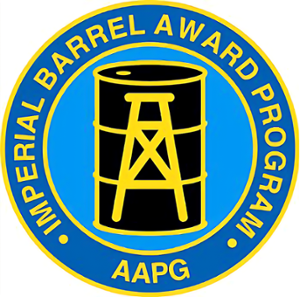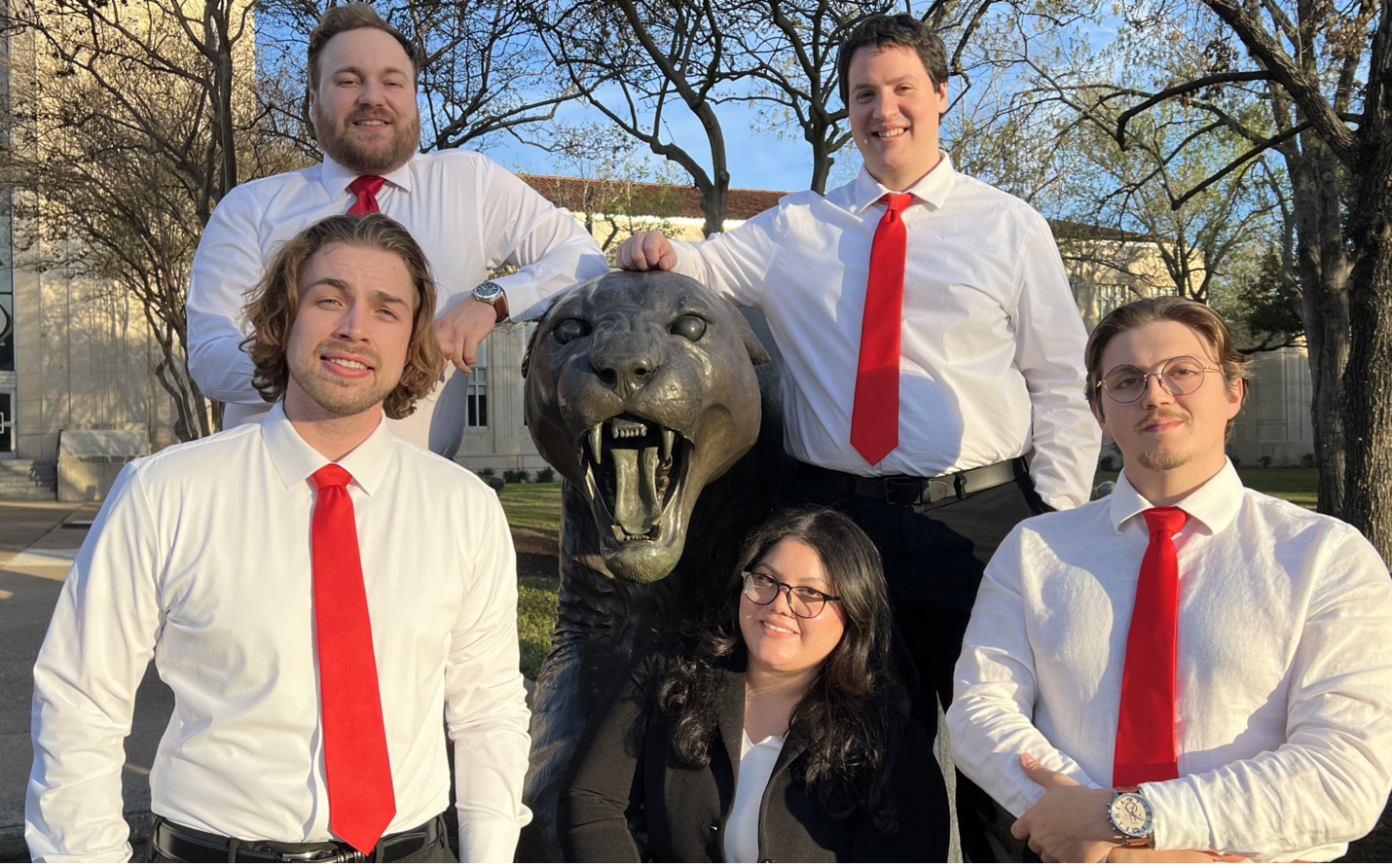EAS Team was the second-place finisher in the Hydrocarbon Exploration Category of the Semi-Finals Competition that involved six other universities in the North American Region

A team of five graduate students from the University of Houston’s Department of Earth and Atmospheric Sciences won second place in the North America semi-finals competition of the Imperial Barrel Award Program (IBA) of the American Association of Petroleum Geologists (AAPG).
Team members include Jameson Hampton (M.S., Team Captain), Jack McLaughlin (M.S.), Leo Collier (M.S.), Estefani Toro-Ruiz (M.S.), and Shawn Fields (M.S.). Faculty advisors are Paul Mann, Hua-Wei Zhou, Jose Gorosabel (Young Professional Advisor). Industry advisors include Gary Guthrie (retired from Marathon) and Steve Walkinshaw (Vision Exploration).
The second-place finish by the UH team was based on their analysis of a petroleum data set from the North Slope of Alaska that hosts the largest oil field in North America, Prudhoe Bay. The team received a $500 cash prize from AAPG for the AAPG student Wildcatters group.
The IBA Program is rigorous and contributes to AAPG’s mission of promoting petroleum geoscience training and advancing the careers of geoscience students. The program currently involves approximately 50 teams and 250 participants. Teams are given three options for data sets to analyze: petroleum exploration, carbon capture, and geothermal energy. In this year’s global competition, UH was second place for the North America region in the hydrocarbon exploration category and finished behind first place winner, Texas A&M University, and third place finisher, Rice University. Other teams in the competition included: Binghamton University (NY), University of Georgia, Louisiana State University, and Colorado School of Mines.
In this annual competition, university teams analyze a dataset (geology, geophysics, land, production infrastructure, and other relevant materials) in the eight weeks prior to their local competition. Each team delivers their results in a 25-minute presentation to a panel of industry experts.

The dataset the 2025 UH EAS team focused on the hydrocarbon potential of the North Slope of Alaska. The analysis also included plans for sequestering CO2 resulting from the prospects, along with geothermal power generation to reduce the environmental impact on this sensitive arctic area.
For the competition, students have the chance to use state-of-the-art computer technology and software on a real dataset, receive feedback from an industry panel of judges, and win cash awards for their school. The judges select the winning team based on the technical quality, clarity, and originality of the presentation.
UH has a strong history of success in the IBA Program since the inaugural year of the program in 2007 when UH won the semi-finals in the Gulf Coast section. Since 2007, the UH IBA team has won first place in the global competition in 2017 and 2019 and placed third in the global competition in 2024. In other years they placed second in the semi-finals competition twice in 2016 and 2020 and placed third three times in 2012, 2013, and 2014.
To learn more about the Imperial Barrel Award Program, visit iba.aapg.org.